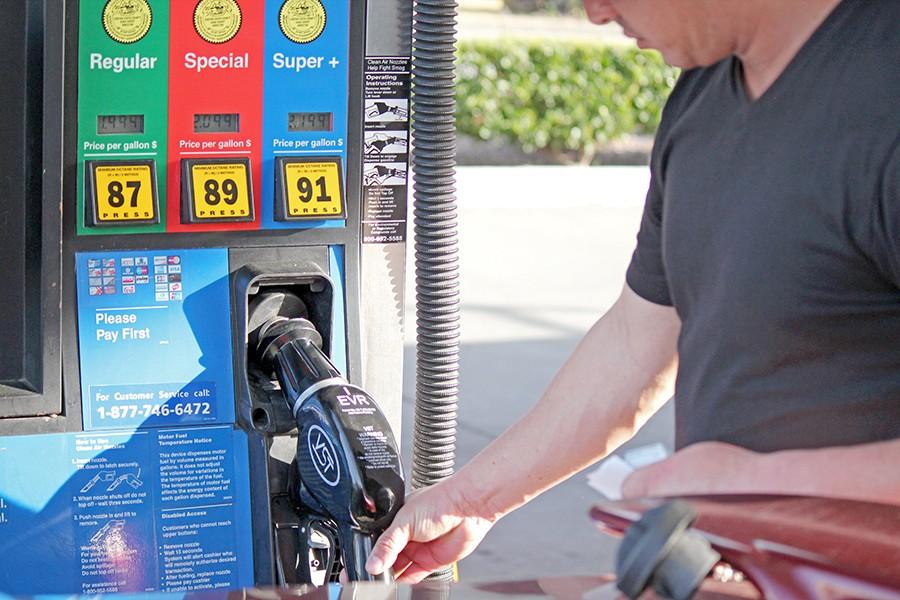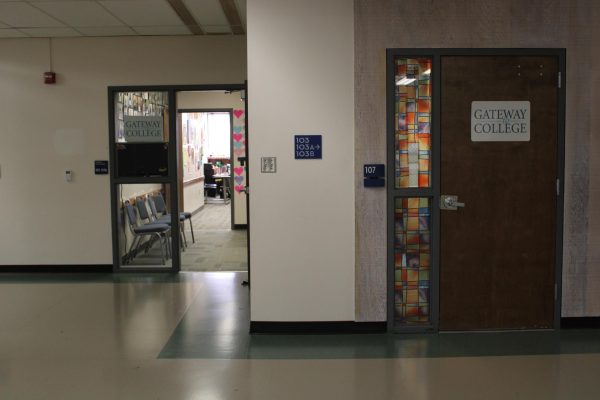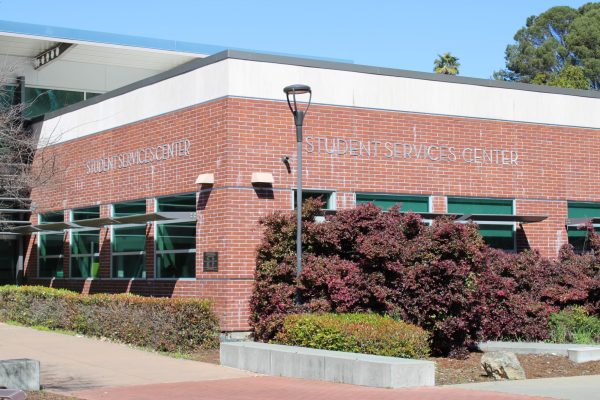Motorists see price at pump drop, commute moods improve
With crude oil at $27 per barrel, drivers exploit gas prices, drive more often
Christian Urrutia / The Advocate
Gas prices have reached a new low since January with crude oil prices dropping down to $27 per barrel. Reasons for the decrease in price may include competition between oil companies and weakening demand for alternative sources of energy.
February 25, 2016
In January, the price of crude oil dropped to $27 per barrel, down 25 percent from last year, bringing the AAA national average for a gallon of regular gas to $2.40, $1 cheaper than this time last year.
Whether it is chalked up to election year shenanigans or fluctuations in global energy markets, saving money at the pump is a welcomed stimulus package for California motorists and Contra Costa College students.
Business major John Velasquez drives a full-sized American truck to campus from Solano County.
“The cheaper gas prices have been helping me out with the commute,” he said. “Even in my personal time I drive a lot more than I used to.”
Although supply and demand dictate pricing, markets make their purchaser believe that global industrial expansion mandates the steady overall price hike as demand increases for a finite commodity.
According to Reuters, officials from the International Energy Agency (IEA) state “the world could drown in an oversupply” of oil.
This could be fueled by competition between big oil companies, weakening demand or incremental global shifts to alternative sources of energy.
In this case, it is fear of a collapsing Chinese economy and as usual, big oil.
After the Organization of the Petroleum Exporting Countries’ (OPEC) meeting last December, Saudi Arabia began a campaign to inundate the non-OPEC countries with oil.
Analysts speculate this is in an effort to force the U.S. and Russia to slow its oil production.
In Russia production was up to a rate of 10.8 million barrels per day. The U.S. produces 9.3 million barrels per day, according to the Energy Information Association (EIA).
No countries have dialed back production and Iran returns to the oil production field after sanctions are lifted later this year.
Although it benefits the nation’s drivers, minus the 250,000 oil industry job layoffs, all plummeting oil costs mean is lower prices at the pump.
Aside from the price per barrel of crude oil, which makes up 68 percent of the price of gas, consumers must factor in 13 percent for refining, 12 percent for taxes and 7 percent for distribution and marketing, according to the EIA.
Through those calculations, the station owners set their prices. There is also a personal mark up for geographical pricing, a process that takes into account the price for gas at stations in the competing market space.
Kwik Serve, on the corner of Rollingwood and El Portal Drive near campus, boasts the cheapest gas in Richmond with $1.99 for regular fuel.
“There have been more people in since the price has been down to $1.99,” Kwik Serve owner Sal Arikat said. “It makes me feel good to give people in the community discounts.”
The drop in gas prices helps with the cost of California living.
“I used to pay $2.98. Now I pay $2.14. It makes the drive from Sacramento easier,” kinesiology major Leander Carter said. “I used to fill up for $35 to $40. Now it’s like $25.”













